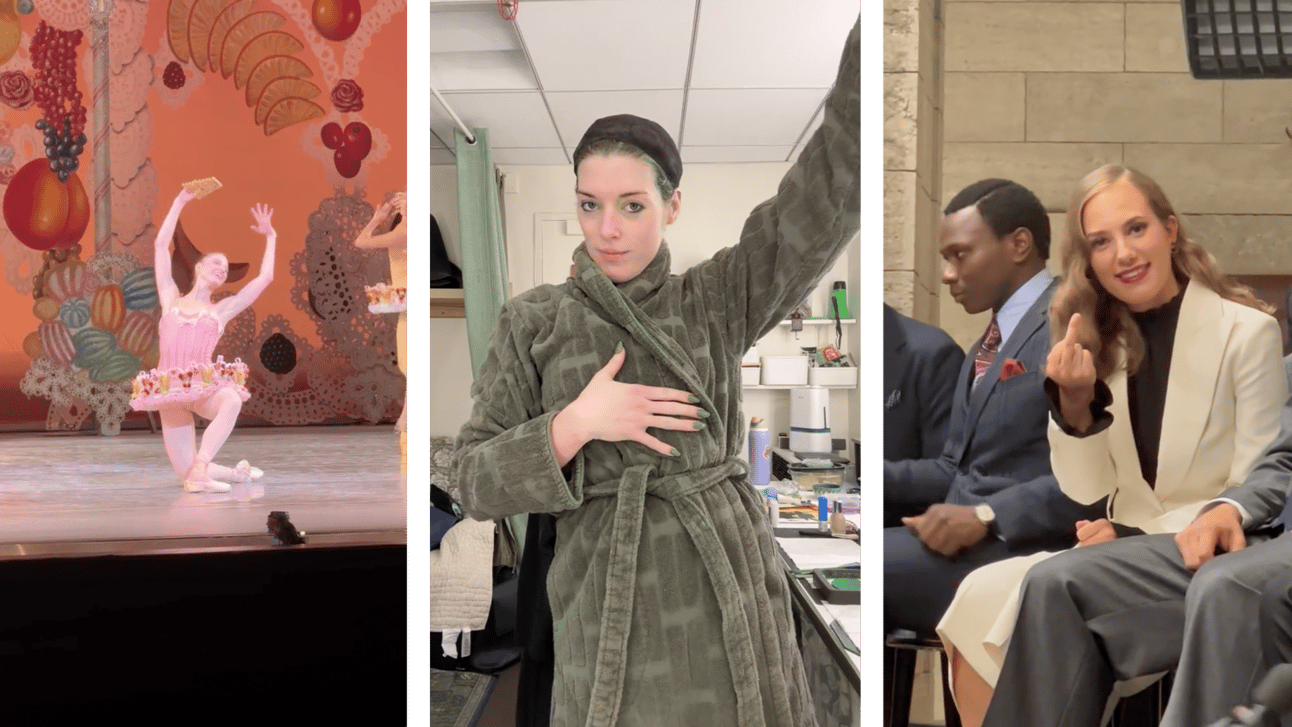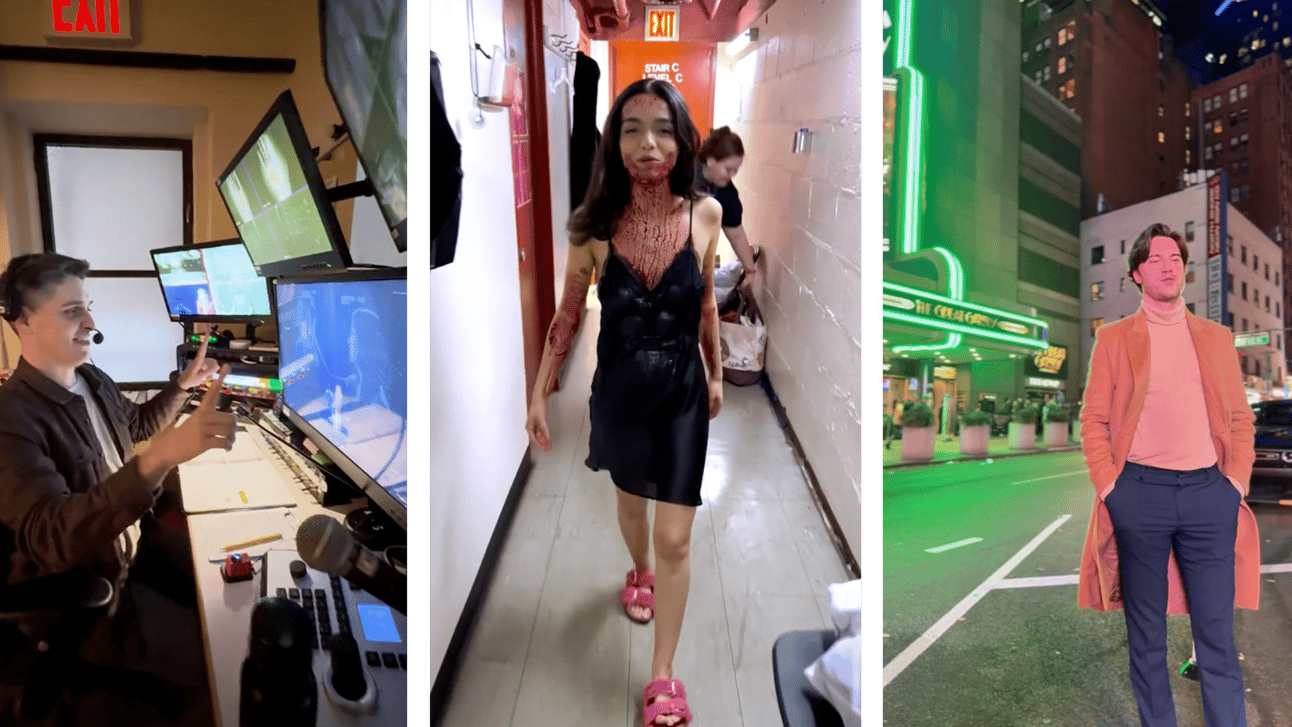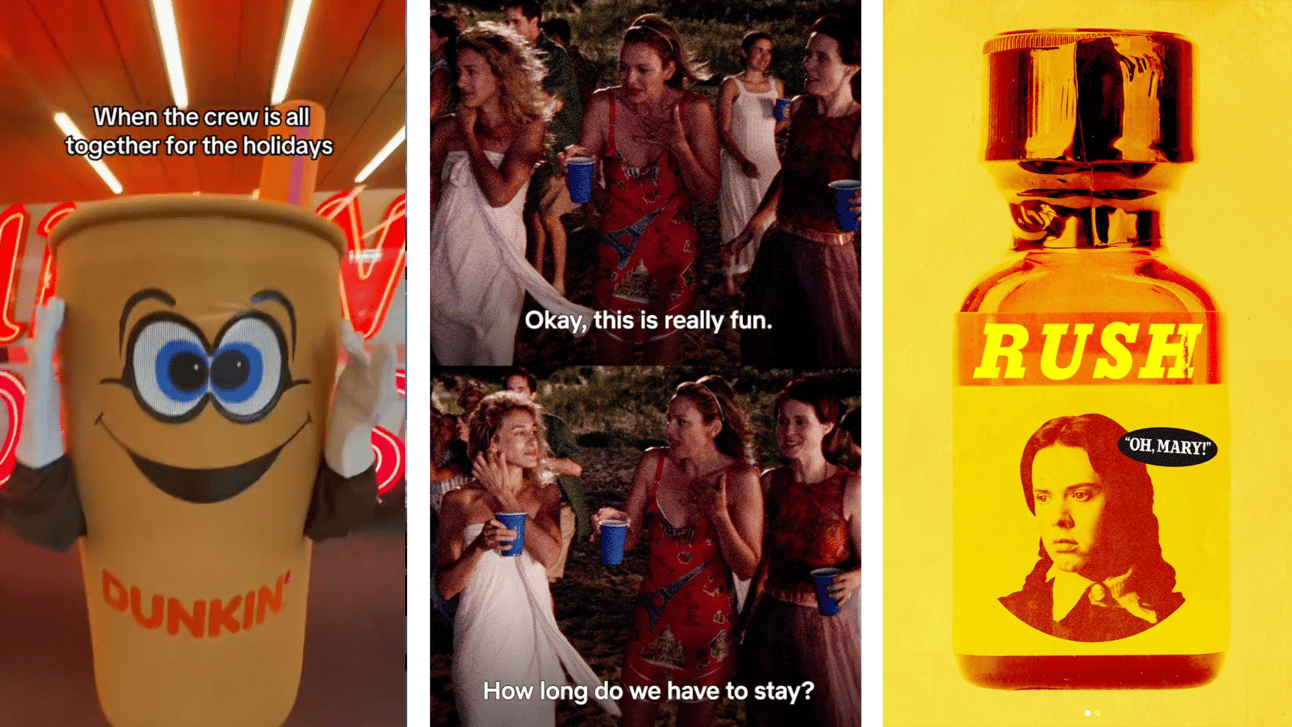The 2025 Playbook 📕
Spoiler: it's fun, easy, and a little unhinged

🥳 Good morning and happy new year! Before we get going, I want to say a quick and heartfelt thank you. This is only the second edition of The Fourth Wall, and we’ve already more than doubled the number of people receiving this in their inbox. Your support means the world to me, and I’m all kinds of excited for what this next year has in store ♥️
To kick off the new year, I’m opening the playbook (different than a Playbill) and giving you the three big plays I see for arts marketing in 2025. And they’re not just ideas—they’re tactical, practical, and proven.
For each play, you’ll get an overview, some specific data, ins and outs, a how-to, and already existing examples.
Ready? Let’s do this.
1. The Pass-Off 🤝
📌 The Big Idea: Trust your team with the mic.
It might seem obvious but we’re tired of corporate mumbo jumbo. Translation: we can tell when a post or piece of marketing went through the 7 layers of hell to get approved - it’s watered down, boring, and predictable. The brands having an impact are the ones that make us say, “I can’t believe a brand account posted that.” In 2025, we want to know that there’s a (possibly unhinged) human typing behind the scenes.
📈 The Facts: Content shared by members of a company receives 8x more engagement than content shared directly by brands.
🟢 The Ins: The fancy marketer term is EGC: employee generated content. Give your people the power to tell their stories, from their own perspectives. Audiences aren't just buying tickets anymore—they're investing in the people who make the thing.
❌ The Outs: Micromanaging your “brand image”, socials, and the people making the content. It puts a strain on trust, severely decreases output, and limits creativity. (Yes, send this to your boss ❤️)
✏️ The How-To: Start thinking of everyone on your team as content creators. Celebrate their unique voices and encourage them to create things that fit their personal style. Give people the space and resources they need to feel empowered to share their own POV within whatever you’re working on.
💥 The Inspo: Here are three completely different versions of the above:
I am obsessed with New York City Ballet’s “Inner Monologue” series
Love love love Mary Kate Morrisey’s (WICKED’s current Elphaba) direct-to-camera confessionals
Sweet Reece Feldman’s behind-the-scenes content on the countless TV and film productions that have hired him
2. The Vertical Shot 📱
📌 The Big Idea: Meet people where they scroll.
The best-performing content next year won’t come from a $10,000 camera rig; it’ll come from someone holding their phone at a weird angle, whispering into the mic, and posting it with zero edits. I know producers and investors are impressed by seeing the first day of rehearsal filmed like an A24 movie, but frankly it’s a waste of time and resources. In 2025, we just want something entertaining and real. You know how Pamela Anderson stopped wearing make-up? It’s like that.
📈 The Facts: Lo-fi content receive 40% more views and 30% higher reach on average than videos that are highly produced.
🟢 The Ins: We want to feel like we’re on FaceTime with you (or your show.) The vibe is spontaneous, unfiltered, and NATIVE to the app it’s being posted on. Just think: the real-er the better-er. And dare I say…we want the crappy bootleg clips even?
❌ The Outs: Overproduced, overly polished videos that feel transplanted from another medium. And once again, if the content passed through fourteen layers of corporate approval, the spark is probably long gone.
✏️ The How-To: Start with trust. Hand your team—your cast, crew, and even your front-of-house staff—a phone and let them play. Keep it short, keep it real, and most importantly—don’t overthink it. If something funny, moving, or unexpected happens; post it and move on.
💥 The Inspo: Here’s a few “home videos” that stopped my scroll:
This BTS look at the stage management office at MAYBE HAPPY ENDING
Rachel Zegler’s Norma Desmond halloween getup and reveal
Announcing Jeremey Jordan’s replacement in THE GREAT GATSBY with a video filmed on a phone
3. The Brainrot Blitz 😈
📌 The Big Idea: Embrace the insanity of the internet.
“Brainrot” was Oxford’s 2024 Word of the Year - let that sink in. Loosely defined as low-value internet content, there is high-value for brands that can get it right. It’s the soundbite that gets stuck in your head or the meme that you send to three group chats with zero context. In 2025, we will be holding space for content that is fun, dumb, and frankly a little feral.
📈 The Facts: More than 60% of consumers were more likely to purchase from brands that employed memes in their marketing
🟢 The Ins: It’s giving unhinged, immediate, and a little chaotic. Whether it’s jumping on a trending sound on TikTok, leaning into a hilariously niche meme format, or creating your own in-jokes with your audience, it’s about playing in the space.
❌ The Outs: Stop treating trends like a box to check. Chasing every viral moment without understanding why it’s funny or relatable makes your content feel forced and gives us the ick.
✏️ The How-To: Be fast, be fearless, and (this is important) be in on the joke. Meme culture is about context, timing, and tone—don’t force it. And please remember: not every trend is your trend. Know when to jump in and when to sit one out.
💥 The Inspo: My DMs are a treasure trove but here are some name brands that I think played it right:
Dunkin Donuts has gone insane
Netflix’s memes have the highest engagement of anything on their feed
OH, MARY! is chaotic perfection
The BIG Big Idea 💡
What if, instead of obsessing over what will go viral or what will convert, we focused on creating work that feels fun, challenging, and creatively fulfilling for us first?
Because here’s a secret: when we create content that we are genuinely excited about—when we let ourselves play, take risks, and follow our own curiosity—it doesn’t just feel better. It works better.
The best fertilizer for our growth (strange metaphor) is you. If you know someone who might find this interesting, please share it!
See you next week!





